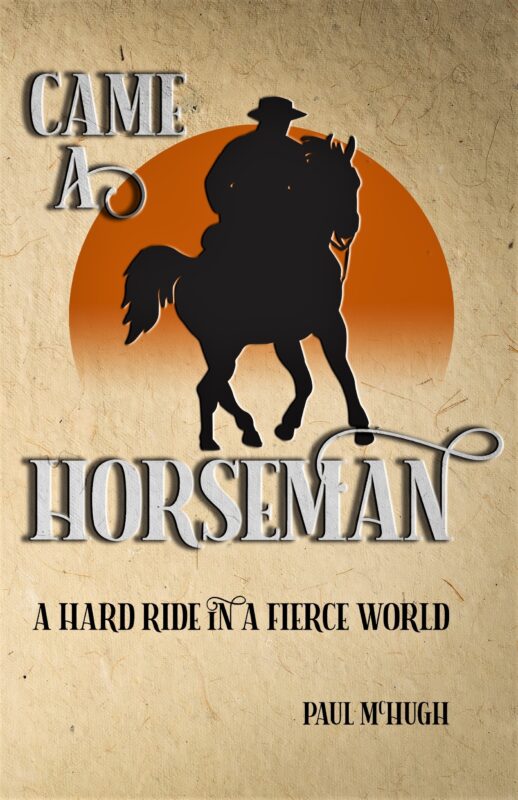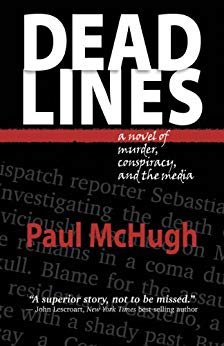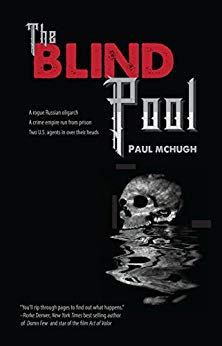
I’ve been asked to speak out loud and in public two times this month, by a couple of quite daring individuals who actually want to hear me say what I think.

First invite came from a Marin chapter of the California Writers Club. A few days later, I’ll attend a Bay Area book club meet-up on the lower SF Peninsula.
Many folks in general, and some writers in particular, abhor any charge to speak in public. However, I don’t mind such events at all; in truth, I rather enjoy them.
It’s not that I can shrug off every single speck of neurotic doubt. But it’s much more the case that I find myself willing to embrace almost any chance to tell stories. Why? Well, in part, as Madonna’s best bon mot puts it—“I think everyone is entitled to my opinion.”
IT’S A TRIBAL THANG
Another way to put it is that readers and writers are definitely my “peeps.” (By which I don’t mean sugar-coated Easter marshmallow chicks.) We are people of the Word. Musicians may prefer to annotate their lives with notes and chords, harmonies and rhythms. Mathematicians like to sum up the basics of existence in integers and equations. Visual artists illustrate their truths with lines, color and texture.

“So it goes,” as Mister Vonnegut famously observed about damn near everything.
From an early age, at a time when I was about equally adept at arithmetic and English (which is to say, not very) I perceived a fork in the path ahead. I could either look at life through the pristine and predictable realm of numbers, or the fuzzy, often dim, and inherently complex lens of language.
I chose the latter, due to my intuition that vague and open-ended definitions of life were paradoxically more accurate. It seemed to me, then and now, that only the loose and flexible limbs of language could ever hope to encircle the mystery and plumb the uncertainty of existence. The opposite view—that life could be plainly, simply, and precisely pinned down by other types of symbols, including the numerical—well, that’s come to seem to me to be a ludicrous delusion.
SQUARE THAT CIRCLE
Setting out upon the course I chose—becoming a man of letters—instantly, and then consistently and constantly, presented me with an inherent challenge: whipping a heap of inert syllables into some sort of sentient apprehension of reality. Just tryin’ to make those dry bones dance, ma’am…

As lingo maestro T. S. Eliot says in one of his Quartets, “Words strain // Crack and sometimes break, under the burden // Under the tension, slip, slide, perish // Decay with imprecision, will not stay in place // Will not stay still.”
That’s both the weakness and the strength of words. They’re much like we the people. All their virtues and vices are laminated together in an amazingly uneven topography.
But, over time, I’ve arrived at some understandings. For example: while selecting individual words to tell a story certainly constitutes a major task of the craft, the more important chore is to arrange an overall matrix of them. Because that’s where the real magic happens: in the interrelations between words. Amid these reverberations a presence is summoned, hovering like a hologram, that can model humanity in a way no other art form seems quite able to achieve.
HOW ENCHANTERS SPELL

‘Twas ever thus. From Sumeria’s “Epic of Gilgamesh”(first set down some 4,000 years ago) ownward, storytellers have striven to snare significance via their dexterous swings of the butterfly net of language.
What makes this millennia-long endeavor so interesting is that the substrate, the wherewithal, the sine qua non of language itself, well, that’s a joint possession of us all. Most of us are not visual artists, though we can perhaps doodle a stick figure from time to time, if asked. Most of us are not musicians, though we might be able to carry part of a pop tune in a bucket, even if asked to stop. However, every single one of us uses words and language pretty much all of the dang time.
Consequently, language has become the very stuff of human consciousness. For an individual, language serves as a bridge between objective experience and personal interpretation. Language both unites and divides us in society, pulling us together and pushing us apart. Language can and has forged deep ties between past and present. Not only that, the language we use now can bear our thoughts and experiences and tales and opinions and jokes far into the future, making them readily available to the presently unborn.
Our minds are linked by language. It’s no wonder, then, that I’ve come to see language as sacred. As a vehicle for sharing human consciousness, its utility is without parallel. And as for those who strive to use language in a skilled and worthy manner, and to grand effect? Such colleagues and cohorts indeed are my brothers and my sisters.
THE PITFALL AND THE PENDULUM

This does not mean all mistakes can be evaded, even by the skillful. In fact, errors are unavoidable. What’s truly interesting about the looming pressure of that fate, though, is that crappy writing doesn’t need to remain that way. Around this household, we have a saying that, “Every piece of writing can always be improved.” Even when a piece has been polished to a high sheen, one might still locate a flaw to buff out.
Many pro writers do advise wannabes trying to fight their way through writer’s block that, “All writing is re-writing,” which is far more true than most folks might ever wish it to be. My own take on that is, “All writing is practice for more writing.” This means that no effort, even a complete disaster, ever ends up as a complete waste. Maybe it doesn’t get published. Or maybe, upon release, it runs into vigorous criticism. Even then, it will constitute one more step on the path.

This may sound like a curse, at first, but when one persists, you can uncover a cause for optimism. Any steady attempt to cure bad writing is a genuine skill-builder.
Since I’ve managed to make it this far in my scribbling career without crashing and burning—well, I’ve indeed crashed several times, but not yet quite burnt—I find people sometimes look to me for tips. And so therefore, in this piece, I guess that I ought to hand over at least one nugget.
So, here you go. Ahem! The single widest, deepest, and most odious pitfall that one must avoid in storytelling is the use of melodrama.
WHEN THOSE CRAWDADS SINK
Melodrama is frequently described as a story with a simplistic plot, thin or stereotyped characters, and a relentless appeal to emotions. All true, but I’d go further and say the most heinous aspect of melodrama is an unvarnished attempt by a storyteller to dictate the ways that his/her audience ought to feel. There’s no better method for running the steamboat of your story onto the muck of a sandbar and leaving it there.

That’s not how life works, and to model or mimic real life, a story should not attempt to work in this manner either. Rather, a writer should focus on simply relating a good story, with characters who are complex and contradictory, just like genuine human beings, and let your readers or listeners figure out on their own how to feel about it or what it all might possibly mean.
In the New York Times Book Review section interviews, authors are frequently asked what successful or popular book might they themselves pan? My current answer would be, “Where the Crawdads Sing,” by Delia Owens. My slim rationale for why her title appeared on best-seller lists throughout the pandemic was its bald appeal to nostalgia—as exemplified by rural, coastal Carolinas in the 50s, when nature was lush and even large problems seemed far simpler.
However, Owens proceeds to screw the pooch by ceaselessly pimping sympathy for her poor, misunderstood and long-dissed heroine, Kya. Nearly everyone’s an ass, except for Kya. She’s a self-taught poet and painter and naturalist—oh yeah, and a murderer too, but even the death that Kya orchestrates is presented as a tidy serving of just desserts for the victim. And of course, Owens can’t bear to have her heroine face any genuine consequences for her deed.

That Kya killed her seducer, Chase Andrews, years after the fact, doesn’t render her sympathetic in my eyes. What it does, is reveal her as a vengeful monster. Despite Owen’s best efforts to vividly gild her lily, Kya actually might be the swamp beast that local townfolk were highly dubious of, almost throughout the entire tale.
Could this book have been improved? Oh yeah. Having Kya face a guilty verdict at her trial is a twist I would’ve found delightful. And to next portray this wild child whilst she struggles to keep her anarchic vision going in a prison cell would’ve given Owens quite the artistic writing challenge.
But as it is, following her acquittal, Kya’s melodrama meanders on to a pathetic finale. Owens doesn’t find an interesting way to end it because her heroine is so monochromatic, whatever she attempts becomes drenched in tedium. Owens’ contrived big reveal—Kya had hidden under her cabin the pendant she once made for Chase, then yanked off his corpse—that was tantamount to an utterly “meh” moment for me. It was similar to discovering that your prize inside a Cracker Jack box is a hunk of Styrofoam popcorn. That reveal made zero sense, be it emotional sense—or indeed, any other kind.
YET EVER ONWARD
Do I ever pan my own writing? You bet. Constantly! One of my favored techniques is to let a manuscript “rest” (that sounds better than “molder” or “grow toadstools”) in a drawer, then haul it out months or even years later, and mull over what I might try to fix its flaws, plant new seeds, then bear it back up into the sunlight to see if it can be induced to bloom.
Solutions can include epic surgery (“Let’s get this arm out of that guy’s nose”) to molecular rearrangements (“A two-syllable adjective puts a better rhythm in this particular sentence”) to character assassinations (“Sorry, sweetheart, you’re about to become a face on the cutting room floor”). I am willing to not only defeat expectations I myself have set in motion, but also to completely upend any of them. You know, to present the sort of event in literature that oft occurs to us all in life—despite humanity’s ceaseless yen to foist its best-laid plans upon the cosmos.

Accomplish these and similar improvements, connect alligator clips to the bolts in your story’s neck, crank the table up to the roof of the lab amid a storm, invite thunderbolts to strike your rods, and soon you may be able to exclaim, just like Gene Wilder did in “Young Frankenstein”—“It’s alive! It’s alive!”
Since storytelling is endless, our opportunity for making fresh discoveries about it also seems infinite. That’s why I don’t mind talking about this stuff whenever someone chooses to ask. I don’t feel like I’m giving anything precious away, something I then myself shall no longer have. Language was designed for sharing, right from its moment of origin. Our game is not zero-sum. Conversing about it is simply another opportunity to ponder the craft, which I shall always and forever do—whether I find myself alone, or in the happy company of other scriveners.
Note: My presentation to the Marin chapter of CWC begins at 6:30 p.m., Wednesday, February 22, at the Mill Valley Public Library. Free Zoom link available. Details below.









